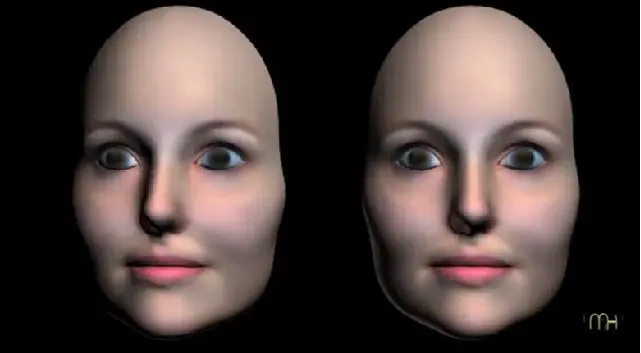The hollow mask illusion explores one of the most well-known properties of our brain: supplementing what it doesn’t see based on what it’s used to seeing. Subject is covered in depth in the post The Blind Spot, in case you want to take a look at it.
SEE ALSO:
- Gate or beach? The image that created controversy on the Internet
- You attract mosquitoes because of your blood type
- 16 Images That Will Make You Have A Brain Flush

The illusion that attends us today consists, basically, of a painted mask with a human face on its convex side (the one that protrudes) and another on its concave side (the inside). When we visualize the image, and even though we know in advance where the trick lies, it is impossible to avoid making the hollow part of the mask look like a protruding face. It’s a very powerful trick, take a look at the video so you can understand it in practice.
A few years ago, a team of neurologists found that certain types of patients, those suffering from schizophrenia, are unable to see this trick. Somehow, their brain processes are different from the rest and they don’t fall for the deception that applies to the rest of the people. In some cases, this optical illusion has even been used to reinforce a previous diagnosis.
To test this theory, Danai Dima, from Hannover Medical School and Jonathan Roiser, from University College London, carried out a study that was echoed in a publication in the journal Neuroimage and which consisted of the recruitment of 13 patients suffering from schizophrenia and 16 control volunteers without any type of mental illness in order to measure their brain flow while viewing three-dimensional images of concave and convex faces. And as they guessed, of the 13 patients who suffered from schizophrenia, 100% reported visualizing concave faces without any relief, as did the control group.
Using a neuroimaging technique, the team was able to see how the different brain regions of the volunteers interacted during the test, and what they concluded was that in the control group, the connections between the parietal lobe region and the visual areas that receive information from the eyes were intense, while in people with schizophrenia this was not. Somehow, people who suffer from this mental illness do not activate this mechanism and do not visualize what their brain expects to see, but what is there, something similar happens with people who have ingested alcohol or who use some type of drug, who also become unable to visualize the optical illusion.
Although the study is not entirely conclusive because it does not establish the origin of this disjunction in the behavior of the brain, experts believe that it may be a good indication to better understand how schizophrenia worksand why the brain seems to behave in such a special way in these patients.
And of course, if for whatever reason you can’t see the optical illusion, stay calm, a video on the Internet cannot be an effective means of diagnosing any disease. In the event of any severe encounter, it is best to consult a doctor.
Related: Young or old? What you see in this image could indicate your age



Comments